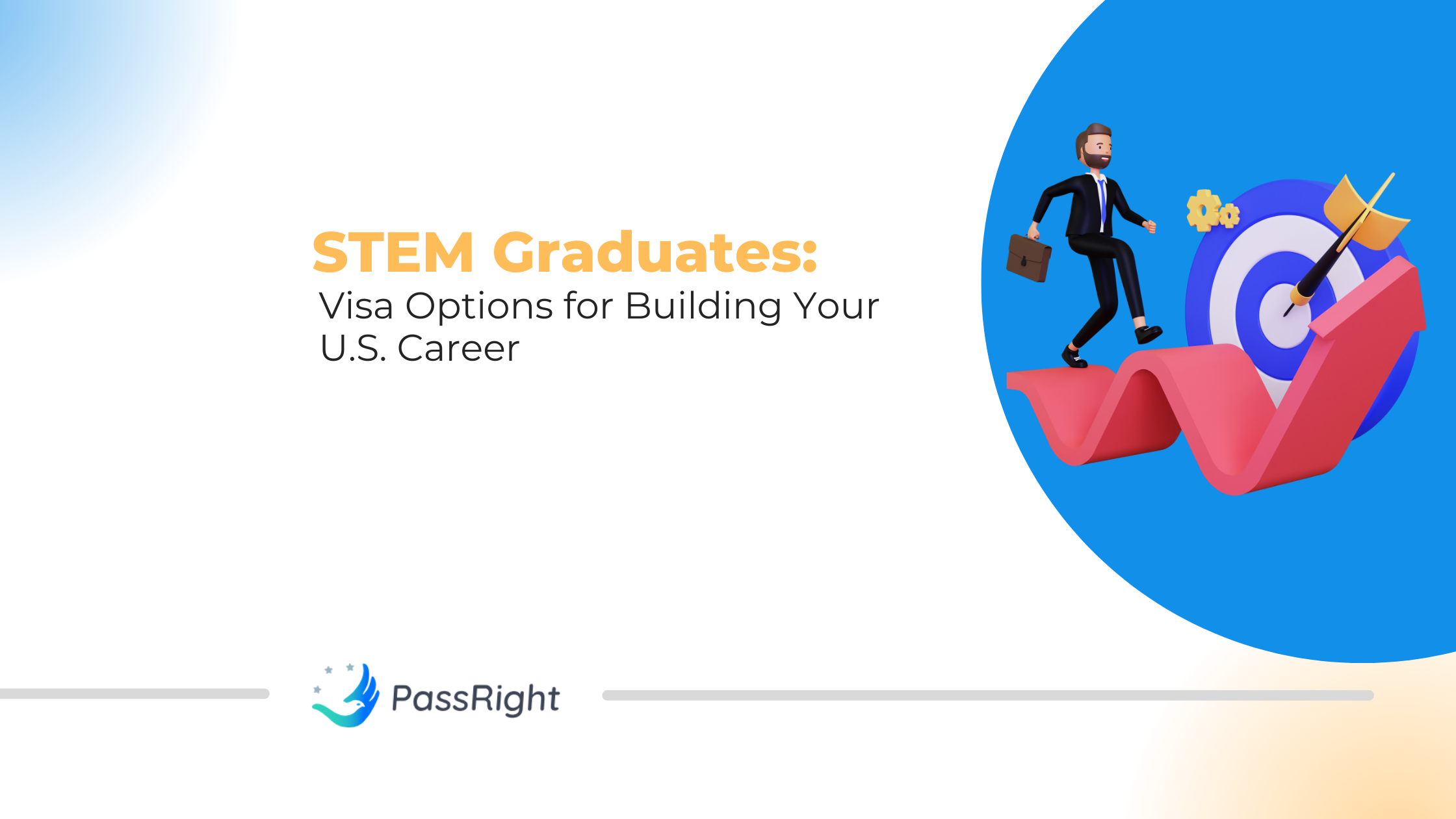As an international student studying in the United States with an F-1 Visa, you may find yourself considering the possibility of staying in the country after completing your studies and becoming a Green Card holder. If you do, two main questions are likely to cross your mind: Can I apply for a Green Card while on an F-1 Visa, and how can I change my status from F-1 to a Green Card?
These questions are crucial as they determine your eligibility to stay and work in the United States permanently. Applying for a Green Card while on an F-1 Visa is possible, but the process can be complex and challenging. You’ll need to meet specific criteria and navigate through a series of steps, which can be overwhelming and time-consuming. With this comprehensive guide, you’ll have a better understanding of the Green Card application process and what to expect. Whether you’re looking to reunite with family members or seeking permanent employment in the United States, this guide will provide valuable information to help you on your journey to becoming a permanent resident of the United States.
What is the F-1 Student Visa?
The F-1 Visa is a non-immigrant visa category that allows individuals to enter the United States as a full-time student at an accredited academic institution or language training program. To be eligible for the F-1 Visa, you must be enrolled in a program or course of study that leads to a degree, diploma, or certificate. Additionally, the institution you attend must be authorized by the U.S. government to accept international students.
Please note that the F-1 student visa is not designed as a dual intent visa but as a single intent visa, which signifies your commitment to enter the United States for the sole purpose of pursuing your studies, with the intention of returning to your home country upon completion of your educational program.
Working on an F-1 Student Visa in the U.S.
As an international student studying in the United States on an F-1 Visa, you may be wondering about your employment options. During the first academic year, F-1 students are not allowed to work off-campus, but they may be eligible for on-campus employment subject to certain conditions and restrictions.
After the first academic year, F-1 students may participate in off-campus employment in three ways:
- Curricular Practical Training (CPT): CPT is a type of internship or practicum that allows F-1 students to gain practical experience in their field of study while still enrolled in school.
- Optional Practical Training (OPT): OPT is another option that allows F-1 students to work in their field of study for up to one year after completing their degree.
- STEM Optional Practical Training Extension (OPT): if you have a degree in a Science, Technology, Engineering, or Mathematics (STEM) field, you may be eligible for a STEM OPT Extension, which allows for an additional 24 months of employment.
In addition to these options, F-1 students may be eligible for off-campus employment due to special situations such as severe economic hardship or special student relief. It’s important to note that any off-campus employment must be related to your area of study and authorized prior to starting any work by the Designated School Official and the U.S. Citizenship and Immigration Services (USCIS).
F-1 Visa to Green Card for International Students
If you are an F-1 Visa holder and you’re considering staying in the U.S. permanently, there are several options available to you. Let’s explore these ways in more detail.
There are multiple subcategories of employment-based Green Cards that foreign students with F-1 Visas may consider changing status to:
Self Petitioning for an EB-1A Work Visa
The EB-1 Visa category is designed for individuals who possess extraordinary abilities in the fields of arts, sciences, education, business, or athletics.
Although obtaining one can be challenging, it could be your ticket to lawful permanent residency and even citizenship in the United States. If you qualify as an EB-1 priority worker, you may be eligible to obtain a Green Card without the need for labor certification or a job offer from a U.S. employer. This can be a great option for those who have achieved remarkable success in their field of work and wish to live and work permanently in the U.S.
Some of the applicants who meet the eligibility criteria for extraordinary achievements choose an O-1A Visa first to get some more time in the U.S. and work on their achievements that would allow them to build a stronger case for EB-1A in the future. The O-1A Visa is reserved for those with exceptional abilities in the fields of science, education, athletics, or business (excluding the arts, motion pictures, or television industry).
To apply for an O-1 Visa, your U.S. employer, agent, or foreign employer must file Form I-129, along with the necessary evidence.
EB-2 Employer Sponsorship or National Interest Waiver Petitions
EB-2 Visas are a great option for those who possess advanced degrees, exceptional abilities, or who can prove they have a national interest. If you have a job offer that requires an advanced degree along with five years of progressive work experience or if you have exceptional ability in the sciences, business, or arts, you may be eligible for an EB-2 Visa.
You will need to provide academic records, letters that prove your work experience. Having documentation that demonstrates your ability to command a high salary in your field is highly beneficial, although it is not an absolute requirement. Additionally, you will need to provide evidence of your professional licenses or certifications, your membership in professional organizations, or any recognition you have received from your peers if you do not have a degree and wish to qualify for EB-2 based on Exceptional abilities standard.
Physicians can also apply for an EB-2 Visa with a special waiver. By agreeing to work full-time in underserved areas for a specific period, physicians can meet the eligibility criteria for this visa category.
Your employer will also need to file the necessary forms with the USCIS. With the right qualifications and documentation, an EB-2 Visa could be your ticket to lawful permanent residency in the United States.
EB-3 Employer Sponsorship
This visa is available for skilled, unskilled, and professional workers who meet certain requirements. Skilled positions require a minimum of two years of training or experience that is not temporary or seasonal, while unskilled positions require less than two years of training or experience that is not temporary or seasonal. Professional positions require at least a bachelor’s degree from a U.S. university or college or its equivalent from a non-U.S. school. If you’re interested in applying, make sure you meet the eligibility criteria and provide all required documents to the U.S. Citizenship and Immigration Services.
U.S. EB-5 Investor Visa
Investors may also be eligible for a green card through the EB-5 Visa category. To qualify, non-U.S. nationals must invest at least $1,05 million (or $800,000 in a high-unemployment or rural area) in a new U.S. business that will create full-time positions for at least 10 workers. This pathway to a green card offers a unique opportunity for entrepreneurs to build their own businesses in the United States while gaining permanent residency for themselves and their families.
Marriage-Based Green Card
As an international student in the U.S., you may find love and decide to tie the knot with a U.S. citizen or permanent resident. If that’s the case, congratulations! You may be eligible to adjust your status and get a green card through marriage. Entering into a marriage immediately after arriving in the United States can still carry certain risks, as it may raise suspicions regarding your original intentions for entering the country. Engaging in such a rapid union might give the impression that your primary motive for coming to the U.S. was solely for immigration purposes, rather than genuine personal reasons. Consequently, it is advisable to exercise caution and ensure that your intentions are genuine and well-documented to avoid any potential misunderstandings or legal complications.
Adjustment of Status for International Students to Get Green Card
U.S. immigration law offers various ways for international students already in the United States to apply for lawful permanent resident status. Once you make sure of your eligibility to adjust your status, you’ll be going to go through the following steps:
- Employer Sponsorship: your employer needs to sponsor you for a green card by filing an Immigrant Petition for Alien Worker (Form I-140) with the USCIS on your behalf, (Unless you’re applying for a marriage-based green card, in that case, you need to file a family sponsorship form (Form I-130).
- Self Petitioning (For EB-1A Applicants): if you’re applying for an EB-1A visa, then you don’t need a sponsor to file an immigrant petition on your behalf., you can self-petition by filing an Immigrant Petition for Alien Worker (Form I-140).
- Adjustment of Status: if you’re already living in the U.S., you can adjust your status to that of a permanent resident without leaving the country. You must file an application to Register Permanent Residence or Adjustment of Status (Form I-485).
- Consular Processing: if you’re outside the U.S., you’ll need to go through consular processing by visiting a U.S. embassy or consulate in your home country to complete the application process. It is called the immigrant visa process.
- Retrogression: since December 2022, USCIS has faced significant retrogressions in filing and final action dates for most employment-based categories. It is important for applicants to stay informed about the current priority dates to manage their expectations and plan accordingly.
- Attend an Interview: after submitting your application, you may be asked to attend an interview with a USCIS Immigration Officer. During the interview, the officer will ask questions about your qualifications and profile, and your answers should match the information submitted in your application form.
- Medical Exam: while applying for a Green Card you may need to undergo a medical exam by a USCIS-approved doctor. The doctor will assess your health and ensure that any infectious diseases or situations won’t prevent you from receiving permanent residence status in the U.S.
- Await the Decision: after attending the interview and undergoing any necessary medical exams, your application will be sent to USCIS headquarters for review. Once your application has been processed, you’ll receive a notice of approval or denial regarding your permanent residency status.
* This article is for informational purposes only and does not provide direct legal advice.
If you would like to discuss your immigration situation, brainstorm, or better understand how we can assist you, please write here.
FAQ:
How can students apply for permanent residence in the U.S. while on an F-1 Visa?
Obtaining a green card while on an F-1 Visa can be a complicated process, but there are different options available for students to acquire permanent residency and work authorization in the United States. We recommend discussing your particular situation with the immigration attorney to check the best Green Card path for you.What are the employment options available to F-1 Visa holders?
During the first academic year, F-1 students are not allowed to work off-campus. However, they can take on-campus employment opportunities that have certain conditions and restrictions. After the first academic year, F-1 students have the option to engage in off-campus employment through Curricular Practical Training (CPT), Optional Practical Training (OPT) (pre-completion or post-completion), or Science, Technology, Engineering, and Mathematics (STEM) OPT.What is the duration of stay for an F-1 visa in the United States?
The F-1 Visa permits international students to remain in the United States for the duration of their educational program, in addition to the 1-3 years of OPT training, plus an extra 60 days. Therefore, if the program of study is four years, the F-1 Visa holder can typically stay in the United States for up to seven years.









